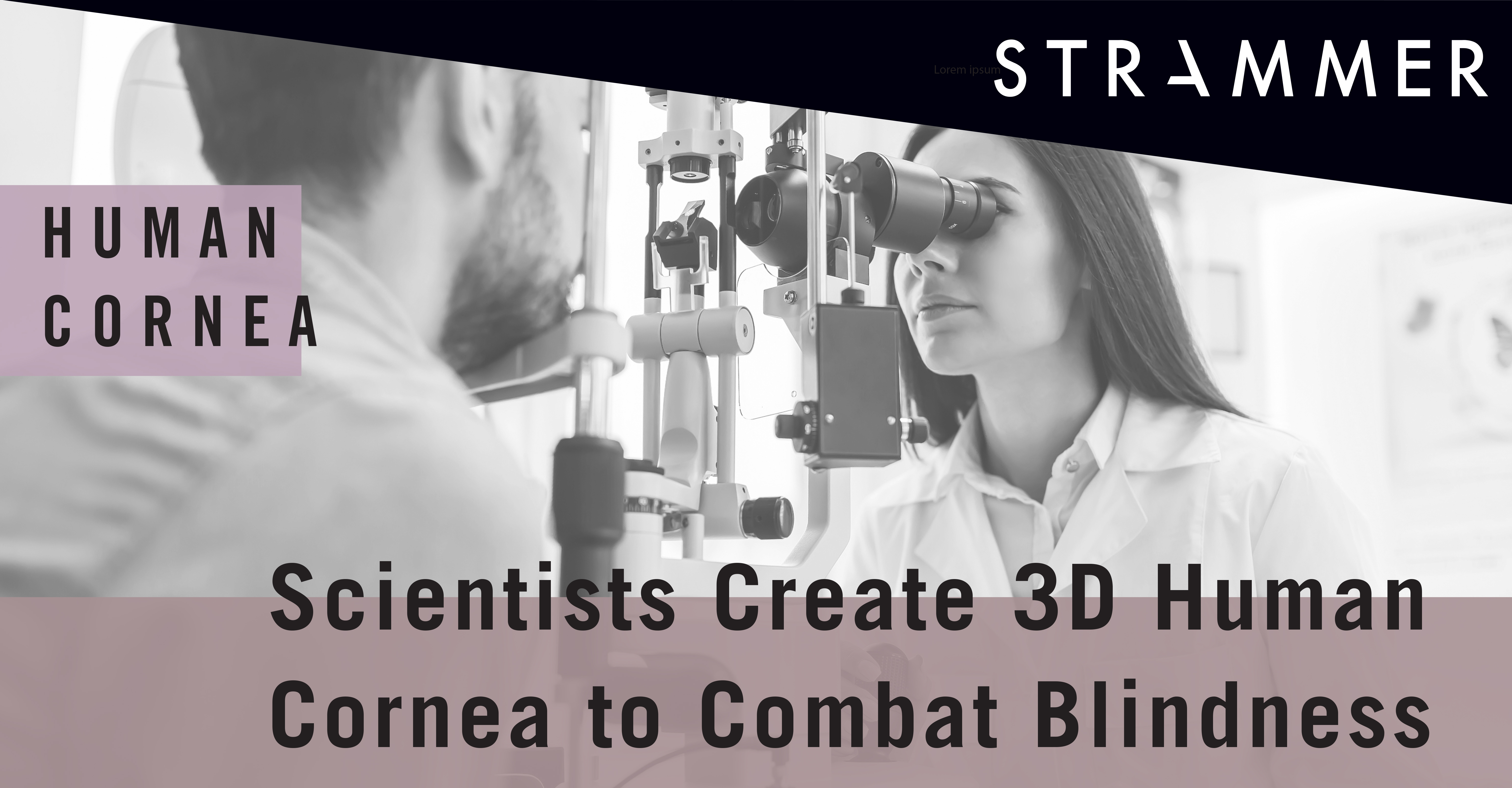Scientists Create 3D Human Cornea to Combat Blindness
Researchers at the Newcastle University have developed the first ever 3D human cornea using a 3D printer. This is an invention said to eventually help millions of patients around the world who suffer from different forms of corneal blindness.
The cornea is a transparent avascular outer coating tissue used as a protective mechanism for the human eyeball. Because it regulates the amount of light that hits the retina, any damage to it can distort vision or can lead to blindness in severe cases.
Despite its important role in the livelihood of mankind, there is still a significant shortage of corneas accessible for surgical transplant. As of 2018, the World Health Organisation estimates that up to 10 million patients worldwide require some form of corneal surgery to correct or prevent blindness resulting from certain diseases, for example, trachoma. In addition, approximately 4.9 million patients presently suffer from the full effects of corneal scarring caused by abrasions, burns or lacerations. Due to the insufficient numbers of donors, the advanced technological production of transplantable corneas has been an encouraging alternative to fill the scarce biological ones.
The scientists at Newcastle University have managed to achieve such corneas using 3D bio-printing, a technique now plausible due to the production of ‘bio-ink’. Bio-ink is a newly produced concept of combining human stem cells from a healthy potential donor with collagen and alginate, which is a chemical used to produce artificial prostatic limbs. The original challenge that the team of researchers faced was being able to determine a feasible bio-ink to work with.
Lead researcher, Professor Che Connon at Newcastle University, stated;
“Many teams across the world have been chasing the ideal bio-ink to make this process feasible.” “Our unique gel… keeps the stem cells alive whilst producing a material which is stiff enough to hold its shape but soft enough to be squeezed out the nozzle of a 3D printer.”
This test was confirmed based on previous work that the team had done by using a similar hydrogel to keep cells alive at room temperature. It has also led the way for subsequent research on bio-ink. For example, there is the possible concept of 4D biomaterials accompanied with 4D printing in the years to come. 4D printing will allow biomaterials to change when exposed to a specific stimulus, that is, heat, water, magnetics, etc.
Although the Newcastle University team is taking monumental steps in bio-printing technology, the researchers still have a few more years of further testing to do before the 3D human cornea is fully utilised as a surgical transplant. However, the progress made thus far has been well received. For example, Dr. Neil Ebenezer, Director of Research, Policy and Innovation at a British charity called ‘Fight for Sight’, mentioned his delight in the successful work that the Newcastle University team has achieved. He concluded by stating that although the study would greatly impact the lives of patients in the future, the medical community must still be reminded of the importance of continuing to donate healthy corneal tissue to combat the immediate shortages.
References:
- Scientists Have 3D Printed a Human Cornea For the First Time, Youtube
- Scientists 3D print human cornea for first time, a technique which could save millions from blindness. May 2018, Independent UK
- First 3D-printed human corneas, May 2018, ScienceDaily
- 3D printed corneas to prevent corneal blindness, February 2019, 3DNatives
- Anatomy of cornea and ocular surface, Feb 2018, NCBI
- Is 3D bioprinting the future of tailor-made medicine?, May 2017, 3DNatives





